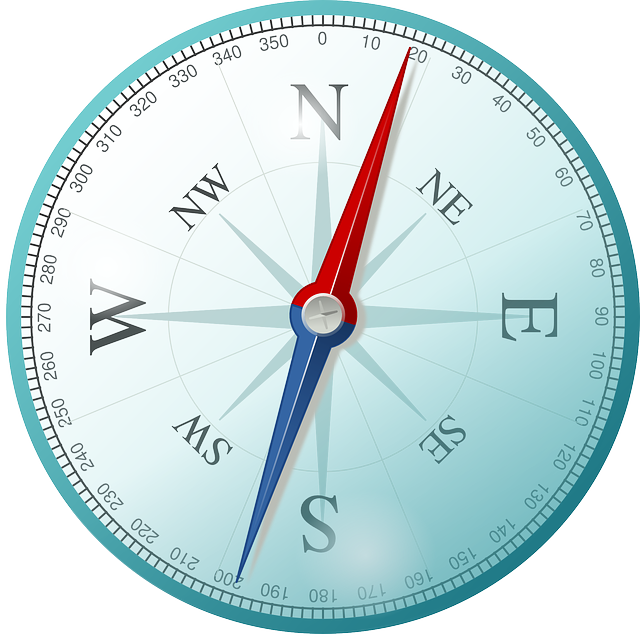Introducing the GIS Shapefile Viewer, an innovative GIS tool designed to provide a seamless experience for exploring your geographical data, both within a dedicated software application and right within your web browser. Packed with a comprehensive array of functionalities, this tool emerges as the quintessential solution for not only viewing but also analyzing your data.
Whether you find yourself grappling with extensive datasets or intricate cartographic compositions, the GIS Shapefile Viewer steps up to the plate, ready to shoulder the task. Its intrinsic purpose revolves around the notion of presenting your data in its purest form, meticulously untangling the web of intricacies that often veils maps, thereby rendering them comprehensible and intelligible—this is especially salient when working with the multifaceted landscape of GIS shapefiles and their equally intricate data counterparts.
Exploring the Intricacies of Shapefiles: A Comprehensive Overview
In the vast realm of geospatial data formats, one particular standout takes center stage: the shapefile. A shapefile, an intricate tapestry of geographic insight, serves as the cornerstone for the representation and storage of a diverse array of geographical data. Considered a distinct subset within the broader scope of GIS data, shapefiles seamlessly weave together geometry, data attributes, and spatial analysis into a coherent fabric.
Shapefiles come to life through a meticulously crafted ensemble of point, polyline, and polygon files, each bearing the .shp extension—a hallmark that denotes their distinctive identity. It’s worth emphasizing that the term “GIS Shapefile Format” encapsulates the essence of this intricate framework. These shapefiles not only encapsulate mere coordinates; they encapsulate the very essence of Earth’s features, meticulously cataloged and harnessed for a multitude of applications.
At its core, shapefiles serve as powerful tools for geographic data modeling and spatial analysis, echoing the precision and versatility of CAD drawings. However, their uniqueness lies in the inherent flexibility to evolve, akin to an artist refining their masterpiece. This adaptability stems from the ease of augmenting or diminishing constituent elements within the model, rendering it a dynamic canvas for geographical creativity. Following these transformative modifications, these files stand ready to seamlessly integrate into an assortment of software ecosystems, including renowned platforms like ArcGIS and QGIS.
Unveiling the GIS Shapefile Extension:
Delving into the intricacies of the GIS shapefile extension unveils a treasure trove of geospatial insights. This extension unfurls as a comprehensive dossier, meticulously chronicling the geographical coordinates and attributes of the data’s earthly abode. Serving as a universal passport for the data’s virtual sojourn across GIS software landscapes, this extension harmoniously blends versatility and uniformity.
The shapefile’s extension triumvirate—the .shp, .shx, and .dbf—merit a discerning gaze. Each extension unfurls its unique chapter in the shapefile saga, together forging a symphony of functional intricacy.
.shp: The Geometric Vanguard:
Hidden beneath the .shp extension, lies the veritable heart and soul of the shapefile—the actual geometry of the object. Herein resides the blueprint of Earth’s features, meticulously etched into a digital tapestry, awaiting interpretation and analysis.
.shx: The Cartographer’s Index:
With the .shx extension, the shapefile metamorphoses into a cartographer’s tome. It houses the index of geometry features, akin to an annotated map key. This esoteric index empowers swift access and navigation across the multidimensional landscapes woven within the .shp extension.
.dbf: The Repository of Attributes:
Beneath the understated .dbf extension, a trove of attributes finds its abode. This data-rich chamber preserves a compendium of information linked to the geometric entities, bestowing a holistic understanding of the geographical tapestry. Like a museum curator cataloging artifacts, the .dbf extension meticulously chronicles the nuances of each feature.
Navigating the World with Cutting-Edge Online Shapefile Viewers
Equator Studio
Embark on a captivating journey into the realm of geospatial data with the remarkable Equator Studio Free Online Shapefile Viewer. Designed to cater to the discerning needs of professionals who rely on precise geographical information, Equator Studio’s viewer emerges as a quintessential tool for those seeking to harness the power of shapefiles in their work.
Marrying simplicity with sophistication, Equator Studio’s free online shapefile viewer boasts a user-friendly interface that belies its immense capabilities. Unveil intricate geographical datasets at your fingertips, and seamlessly manipulate them through an intuitive and interactive platform. From spatial analysts meticulously dissecting patterns to data journalists uncovering hidden narratives, this tool’s multifaceted features cater to a spectrum of expertise.

Immerse yourself in the boundless potential for exploration and discovery. Unlock new vistas of understanding as you delve into datasets that reveal the Earth’s secrets. Aspiring geographers and curious minds alike can benefit from this viewer’s educational prowess. Envision a virtual classroom where geography comes alive, enabling students to navigate the world’s intricacies at their own pace.
ASPOSE Shape Viewer
Liberate the potential of your geospatial data with the ASPOSE Shape Viewer, a dynamic online portal that transcends boundaries and empowers GIS users with seamless access to shapefiles and GPX files. Regardless of your proficiency level, whether you’re a seasoned professional or a curious beginner, ASPOSE Shape Viewer extends its welcoming embrace to all.
Navigate the realm of geospatial wonders effortlessly, as this portal beckons you to upload your shapefile and GPX treasures. With a single click, unveil the intricate tapestry of your data, rendered before your eyes with breathtaking precision. Traverse terrains, unravel urban dynamics, and dissect landscapes, all with the ease of a click.
Gone are the days of complex installations or arduous configurations. ASPOSE Shape Viewer harnesses the power of the cloud, liberating you from the shackles of conventional software. Whether you’re visualizing the migration patterns of wildlife, tracing the evolution of cityscapes, or charting the ebb and flow of tides, ASPOSE Shape Viewer amplifies your capabilities.
Desktop Shapefile Viewer
As you delve into the vast capabilities of the Desktop Shapefile Viewer, a world of customization unfurls before your eyes. Every inch of your interactive map becomes a canvas, allowing you to wield the artist’s brush and effortlessly swap colors to match your vision. Such flexibility not only empowers personalization but also enhances the clarity of your data representation, ensuring that every map is a tailored masterpiece.
ESRI’s ArcGIS Explorer Desktop
Within the tapestry of geospatial software, ESRI’s ArcGIS Explorer Desktop emerges as a beacon of intuitive exploration, beckoning both novices and seasoned geographers alike. At its core, it’s not just a tool; it’s a portal into a realm of geographical revelations.
As the digital curtains rise, ArcGIS Explorer Desktop extends an open invitation to your shapefiles, breathing life into them with an elegance unparalleled. The ability to seamlessly view and discover shapefiles is just the prologue; it’s the integration of ArcGIS Online GIS data that elevates this software to an unrivaled pedestal of comprehension.
For those who yearn to tread paths less trodden, ArcGIS Explorer Desktop unveils a secret passage. It becomes your compass, guiding you through the maze of data with the grace of a seasoned cartographer. You uncover insights that lie beyond the horizon of traditional representation, drawing lines of correlation and connection that redefine the contours of understanding.
TNTatlas
Imagine a tool that transforms your computer screen into a celestial window, allowing you to traverse the landscapes of Earth and beyond. This marvel is none other than TNTatlas, a shapefile viewer that encapsulates the art of geographical exploration in its purest form.
Picture a spectrum of geodata formats converging in a harmonious convergence: shapefiles, GeoTIFF, PNG, DWG, and a tapestry of others. TNTatlas doesn’t just cater to one palette; it paints your canvas with an artist’s assortment of hues. As you journey through this kaleidoscopic gallery, geographic data transforms into a symphony of visual elements, each note resonating with insight and possibility.
However, TNTatlas is not merely a viewer; it is an invitation to wander through the dimensions of space and time. It equips you with the tools to probe, dissect, and immerse yourself in the geographic minutiae. With this tool in hand, you aren’t just an observer – you’re an interstellar voyager, charting courses across the cartographic cosmos.
Conclusion
In conclusion, a shapefile viewer serves as an indispensable tool for efficiently visualizing, analyzing, and interpreting geospatial data. Its ability to seamlessly render complex geographic information in a user-friendly interface empowers professionals across various domains, from urban planning and environmental management to disaster response and market analysis. Through this article, we have explored the key features and benefits of shapefile viewers, highlighting their role in democratizing access to spatial data and fostering informed decision-making.
